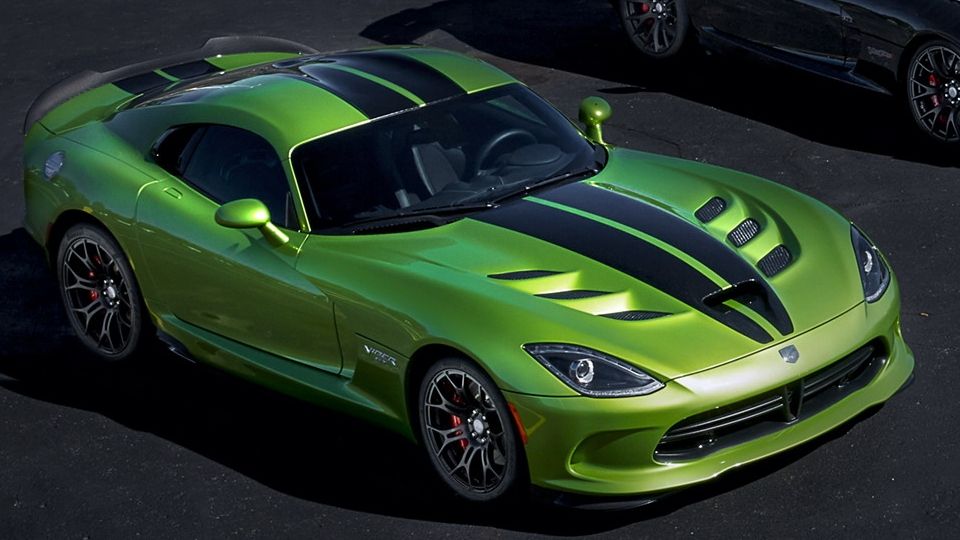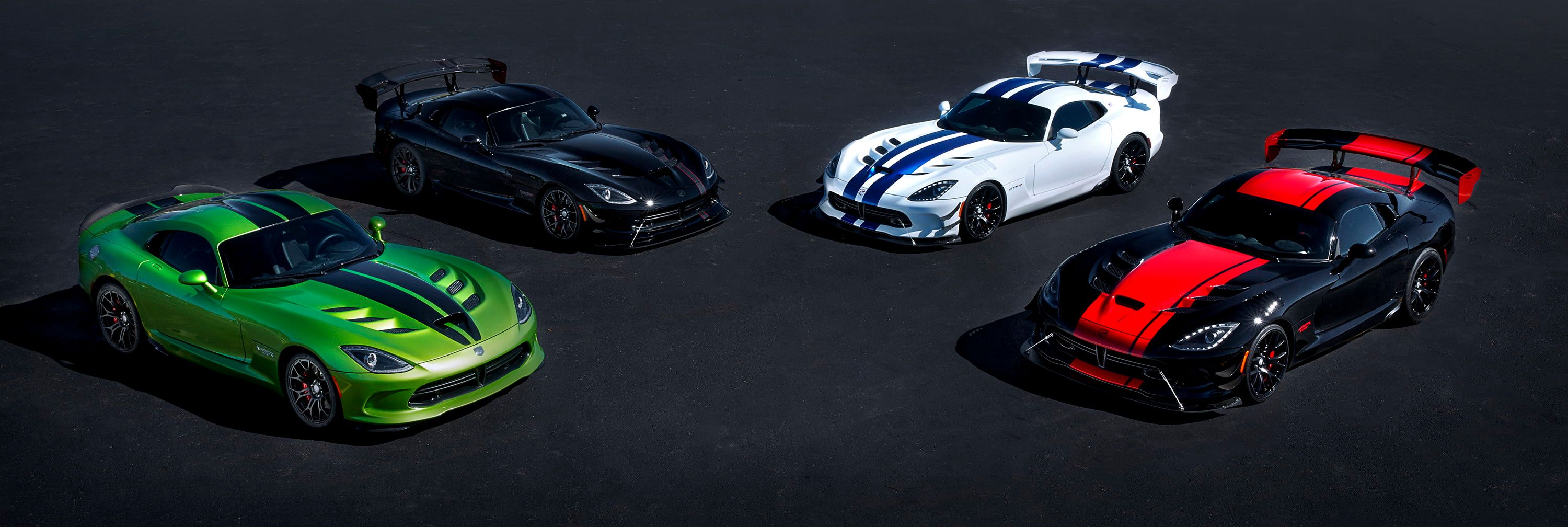It’s a well-known fact that the Dodge Viper will be discontinued after the 2017 model year. That choice came as a response to slow sales and Chrysler's lack of motivation to engineer side-curtain airbags that could fit inside the cabin. So, it should come as no surprise that Dodge is taking advantage of the Viper's 25th anniversary and subsequent discontinuance by creating a handful of limited-production models that will surely grab extra money from fans.
Tim Kuniskis, Head of Passenger Cars for Dodge, SRT, Chrysler, and Fiat, said, “The Dodge Viper has had a great run, and 25 years after it was first introduced, it leaves the supercar world reaching for the records it continues to set. With more track records than any production car in the world, the Dodge Viper ACR will live on as the fastest street-legal Viper track car ever, the car that has set the benchmark for all that follows in its tracks.”
Out of this handful of limited-production vipers, the one I’m here to talk about today is the Dodge Viper Snakeskin Edition GTC, which is essentially a remake of the 2010 Snakeskin Viper ACR that was offered back in 2010. The 2010 model, by the way, was built in just 31 units. To stay true to the whole “25th anniversary” thing, Dodge is sticking to building just 25 of the 2017 Snakeskin Edition GTC. With that said, let’s take a closer look at this model and what it brings to the table.
Continue reading to learn more about the Dodge Viper Snakeskin Edition GTC.
2016 Dodge Viper Snakeskin Edition GTC
- Make: Array
- Model: 2016 Dodge Viper Snakeskin Edition GTC
- Engine/Motor: V12
- Horsepower: 700 @ 8250
- Torque: 508
- [do not use] Vehicle Model: Array
What makes the Dodge Viper Snakeskin Edition GTC special
As is the case with the other limited-run 2017 models, the Snakeskin Edition doesn’t boast a whole lot of goodies on the outside. It's based on the standard Viper, which means it gets the six vents on the hood, a central air inlet, a large lower grille, and smaller inlets on the corner of the bumper. Dodge’s press release claims the car gets an “advanced aerodynamics package,” but I see no physical change from the standard Viper, so it must be boasting the aerodynamics of the standard model. The big news is the Snakeskin Green exterior finish with the snakeskin patterned SRT stripe that runs from the tip of the hood and back, along the center line of the car. I must admit I really like the color of the exterior finish, and the stripe really goes well with the color scheme and car’s overall layout, but it’s still rather lazy in my opinion.
Inside, the changes were also kept to a minimum, with the biggest highlight being the GT black interior. Beyond that, the only thing special about the interior is the specialized plaque that's engraved with the serial number of the car. I can’t complain too much about this, as the interior of the Viper is rather sporty. The steering wheel always seemed a little thick to me, but I love the way the shifter on the center console is so short and how the center console sits considerably higher than the seat cushion, giving the driver a place to rest his arm as he shifts. There is, of course, a decent infotainment system and a sporty-looking instrument cluster. It’s not a bad setup, and the GT black interior should help give the interior a better feel.
As is the case with the other special-edition Vipers in this group, Dodge has done nothing to the powertrain. Not that it’s necessarily a bad thing, though, as the 8.4-liter under the hood does deliver 645 horsepower and 600 pound-feet of torque. It’s enough to push the sports car to 60 mph in about 3.3 seconds to go with a top speed of 206 mph. For 2015, some advanced tuning helped to increase fuel economy a bit, allowing the Viper to obtain up to 20 mpg on the highway— not bad for a V-10.
At this point, there's no telling if Dodge will actually build all 25 models that are planned for production, as that really depends on how strong interest is. All told, it shouldn’t really matter that much if it happens to sell out before you get one, though. It wouldn’t be very hard to make a replica of the model, minus the snakeskin badge and serial number on the dash, as I’m sure there's more than a handful of body guys that would be willing to modify your existing Viper to look almost identical to the model you see here. It would be somewhat costly, I’m sure, but Dodge will probably ask for quite a hefty premium for any of these limited-edition models, especially since fans will pay big to own a special edition of a car scheduled for discontinuation. Not that they won't be valuable in the future, but it still comes off as a money grab scheme to get some extra dollars from loyal customers and fans of the car.
Dodge Viper
At the very least, you can call the Viper a true American car. It features a powerful V-10 engine, a mean voice, and stylish looks from its coupe body style. Originally released as a concept back in 1989, the general public fell so in love with it that the car’s chief engineer, Roy Sjoberg, was instructed to build a production model. In 1992, it made its long-awaited debut. It went on for three years practically unchanged until the Phase II model was released for 1996. 2003 saw a new generation that lasted until 2010. At the time, the car was slated to be discontinued due to Chrysler’s severe financial problems, but CEO Sergio Marchionne decided to push it anyway, and we got the third-gen model for the 2013 model year.
Now, as we approach the 2017 model year, Chrysler has one again decided to discontinue the Viper, but this time, it looks like it’s for real. There have been rumors and hints toward a successor, but it’s not something that's expected to happen anytime in the near future. As of this writing, the Viper is available in five different variations – Viper SRT, Viper GT, Viper GTS, Viper ACR, and the Viper GTC. The car is highly customizable, with models like the GTC available in 8,000 different hand-painted exterior colors, plus a long list of options. The Viper starts out at $87,895 for the base SRT model, $95,895 for the GT and GTC, $107,995 for the GTS, and $118,705 for the crazy range-topping Viper ACR. The Viper may soon disappear as a production car forever, but it has become a legend among legends, and the iconic name will continue to generate smiles and intrigue long after the last model rolls off the production line.
Read our full review on the Dodge Viper here.




